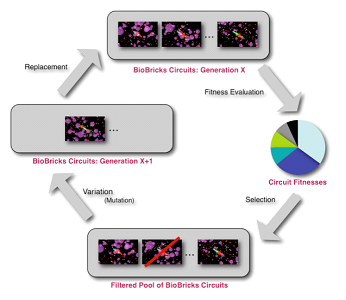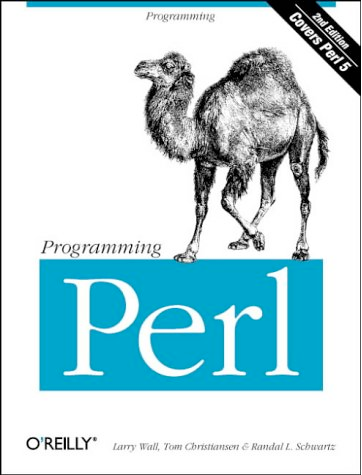Team:Calgary Software/Project
From 2008.igem.org

|
| Home | The Team | The Project | Modeling | Notebook |
|---|
| Evolutionary Algorithm | Data Retrieval | Modeling | Graphical User Interface |
|---|
Contents |
Introduction
We use evolutionary and genetic strategies, which are useful modeling methods, especially when coupled with agent-based designs. We created EvoGEM, a design that is based on the registry of genetic parts provided by the iGEM competition.
This design uses the paradigm of evolution to select efficient designs and produce a product or output that is generated independently by the system. EvoGEM uses the strategies of genetics and evolution to simulate an environment inside of a prokaryotic cell. This entails various events and structures that are present inside of the organism, such as:
- RNA polymerase - messenger-RNA - ribosomes - transcription and translation.
The program assembles generations from a selection of parts - retrieved from the iGEM registry - and creates genetic circuits. The circuits proliferate in each generation, and the best possible combination of parts is selected. Eventually, the best circuit is obtained from the system and a desired functionality is returned. The powerful agent-based logic allows for minimal assumptions about the behavior of the system, when coupled with the empirically proven evolutionary design, creates a superb system that is able to both simulate and develop iGEM circuits.EWe presented EvoGEM during the 2007 iGEM Jamboree, where it sparked a lot of interest amongst the different teams. This summer, our team has expanded EvoGEM by: - improving EvoGEM's fitness function. - introducing more complex pattern recognition. - testing the system under a much larger search space. Our goal was to create a system sophisticated enough to rebuild working designs from previous years' teams' projects, as well as intelligent enough to simulate successes and failures of working and non-working systems, respectively. We achieved our goals by: - building Perl scripts that support EvoGEM's requirements of a flat file registry - creating an Objective-C based graphical user interface (GUI) in order to make the software-user interaction easy - developing the EvoGEM code to include the behaviors specified before, and create a simulation of the processes in the cell such as transcription and translation.
Evolutionary Algorithm
Evolution involves the changes of inherited traits in a population for successive generations. Each generation carries genetic information, expressing certain characteristics. Mutation enables manipulation of these traits as well as genetic recombination. Evolution is a result of heritable traits becoming more prevalent or rare. Agent-based modeling is a computational method that replicates the behavior and interaction of individual components of a network such that their overall effect on the system can be observed. This involves many different aspects, including: - game theory - evolutionary programming - complex systems - emergence
Multiple agents are simulated in an environment to simulate and hypothesize the actions of complex phenomena. .
Data Retrieval and Storage
Modeling
Graphical User Interface
| Evolutionary Algorithm | Data Retrieval | Modeling | Graphical User Interface |
|---|
| Home | The Team | The Project | Modeling | Notebook |
|---|
 "
"


